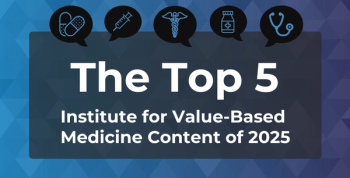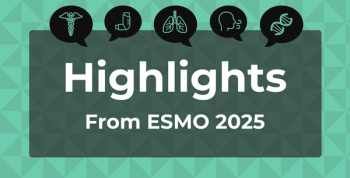
The American Journal of Managed Care
- July 2022
- Volume 28
- Issue 7
Cost-Benefit Analysis of Sacubitril/Valsartan in a Medicaid Population
The cost avoidance of heart failure–related hospitalizations and emergency department visits may outweigh the additional drug cost in Medicaid members adherent to sacubitril/valsartan.
ABSTRACT
Objective: To evaluate the cost-benefit of sacubitril/valsartan in adults with heart failure (HF) enrolled in a state Medicaid plan to prevent HF-related hospitalizations and emergency department (ED) visits.
Study Design: Retrospective, claims-based, cost-benefit study.
Methods: This exploratory cost-benefit study evaluated Massachusetts Medicaid (MassHealth) members with HF who had an initial pharmacy claim for sacubitril/valsartan between July 7, 2015, and August 31, 2018 (index date). Efficacy outcomes, HF-related hospitalizations and ED visits, and cost outcomes for HF-related medical and pharmacy claims were compared 1 year pre– and post index date. Benefit-cost ratio and net benefit were calculated for all members. A subgroup analysis evaluated the outcomes for members who were adherent to sacubitril/valsartan.
Results: A total of 22 members were identified for the study. There were fewer hospitalizations and ED visits post sacubitril/valsartan initiation in the overall population (post vs pre-: 23 vs 26) and among 12 members adherent to sacubitril/valsartan (10 vs 12). The median (IQR) cost for hospitalizations and ED visits was lower during the postindex period ($576 [$19,439] vs $132 [$11,692]) whereas the median (IQR) cost for HF pharmacotherapies was greater during the postindex period ($4578 [$3033] vs $270 [$255]). The benefit-cost ratio and net benefit were 0.91 and –$336, respectively, for all members and 1.43 and $2337, respectively, for members adherent to sacubitril/valsartan.
Conclusions: The benefit as demonstrated by the cost avoidance of HF-related hospitalizations and ED visits did not outweigh the additional costs of sacubitril/valsartan, but cost-benefit was observed in members who were adherent to sacubitril/valsartan.
Am J Manag Care. 2022;28(7):349-352.
Takeaway Points
Although previous analyses demonstrated that treatment with sacubitril/valsartan was associated with lower hospitalizations and total health care costs than treatment with angiotensin-converting enzyme inhibitors or angiotensin receptor blockers, there are limited data in the Medicaid population. This retrospective, claims-based, cost-benefit study:
- Utilized real-world data to compare the cost of heart failure (HF)–related hospitalizations and emergency department visits with the treatment cost of managing HF pre– and post sacubitril/valsartan initiation for adults in a state Medicaid population.
- Demonstrated the need for payers to better assess the value of medications in order to make health care–related decisions regarding cost-effective pharmacotherapeutic options.
Approximately 6.5 million adults in the United States have a diagnosis of heart failure (HF). Patients with a left ventricular ejection fraction of 40% or less are classified as having HF with reduced ejection fraction (HFrEF).1,2 Angiotensin-converting enzyme inhibitors (ACEIs) and angiotensin receptor blockers (ARBs) were the mainstays of HFrEF therapy until July 7, 2015, when the FDA approved sacubitril/valsartan, an angiotensin receptor-neprilysin inhibitor/ARB combination product, to reduce the risk of cardiovascular death and hospitalization in patients with chronic HFrEF.3,4
Although multiple cost-effectiveness analyses comparing sacubitril/valsartan with ACEIs or ARBs demonstrated decreased hospitalizations and costs, the real-world data remain limited on the economic impact of sacubitril/valsartan in a Medicaid population or among those identified as being adherent.5-9 This study evaluated the cost-benefit of sacubitril/valsartan in the Massachusetts Medicaid (MassHealth) program among adults with diagnosed HF by comparing the cost of HF-related hospitalizations and emergency department (ED) visits avoided vs all other HF-related health care costs before and after the initiation of sacubitril/valsartan.
METHODS
This exploratory, retrospective, payer-perspective analysis included pharmacy claims, medical claims, and prior authorization (PA) data from July 7, 2014, to August 31, 2019, for MassHealth fee-for-service/primary care clinician/primary care accountable care organization members with continuous coverage 1 year pre- and post initiation of sacubitril/valsartan (ie, index date). The pre–index date period was defined as the 1-year period prior to initiating sacubitril/valsartan (ie, first paid pharmacy claim), whereas the postindex period was defined as the 1-year period post sacubitril/valsartan initiation. This analysis was approved by the University of Massachusetts Medical School Institutional Review Board. The study population included members 18 years or older with an approved PA request for sacubitril/valsartan between July 7, 2015, the FDA approval date for sacubitril/valsartan, to August 31, 2018, and at least 2 pharmacy claims for sacubitril/valsartan during the postindex period. MassHealth allows all qualified prescribers to submit a PA request as long as they are registered as a MassHealth provider. It was assumed that members with approved PA requests for sacubitril/valsartan had a diagnosis of HFrEF. Members with third-party liability (TPL), 340B claims, or a break in coverage, defined as at least a 45-day gap throughout the pre- or postindex periods, were excluded. On October 1, 2019, sacubitril/valsartan was approved for the treatment of symptomatic HF with systemic left ventricular dysfunction in pediatric patients 1 year and older. Given that the index period was before this new indication, the focus of this analysis was on chronic HF alone.
Demographic and clinical information collected included gender, age at treatment initiation, adherence to sacubitril/valsartan (defined as proportion of days covered ≥ 80% during the postindex period), and utilization of other HF pharmacotherapies (excluding sacubitril/valsartan) during the pre- and postindex periods. Efficacy outcomes included the number of HF-related hospitalizations and ED visits during the pre- and postindex periods based on medical claims. Cost outcomes included median (IQR) costs per member and the overall amount paid for medical and pharmacy claims related to HF during the pre- and postindex periods. Discount rates for the medication over time were not applied given the negligible difference in costs.
Benefit-cost ratio and net benefit were calculated for all members. The benefit-cost ratio was defined as the ratio of the mean difference (ie, cost avoided) in the cost of HF-related hospitalizations and ED visits per member to the mean difference in the cost of HF pharmacotherapies per member between the pre- and postindex periods. For the benefit-cost analysis, the benefits of utilizing sacubitril/valsartan (cost avoidance in hospitalizations and ED visits) would outweigh the cost of the medication if the benefit-cost ratio was greater than 1.0. The net benefit was defined as the difference between the cost avoided in HF-related hospitalizations and ED visits per member and the mean difference in the cost of HF pharmacotherapies per member between the pre- and postindex periods. A positive difference would indicate that the benefits of utilizing sacubitril/valsartan would outweigh the cost of the medication for the payer. HF-related hospitalizations and ED visits were defined as medical claims with a diagnosis of HFrEF based on International Classification of Diseases, Ninth Revision (ICD-9) or International Classification of Diseases, Tenth Revision (ICD-10) codes in the first 3 billing positions.
A subgroup analysis evaluated the end points for members adherent to sacubitril/valsartan. Sensitivity analyses were performed by calculating the benefit-cost ratio and net benefit using the low and high values from the 95% CIs of the cost estimates.
RESULTS
Of the 185 members with an approved PA for sacubitril/valsartan between July 7, 2015, and August 31, 2018, a total of 22 members met the criteria for study inclusion. The majority of members were male and the mean age at treatment initiation was 50.3 years. Most of the members had concurrent claims for β-blockers, loop diuretics, and/or potassium-sparing agents before and after initiating sacubitril/valsartan. Despite initiating sacubitril/valsartan, some members switched back to an ACEI or ARB for reasons that could not be identified from claims information. Of the 22 members in the study population, 12 members were adherent to sacubitril/valsartan.
There were 3 fewer hospitalizations and ED visits (post vs pre-: 23 vs 26) after members initiated sacubitril/valsartan and 2 fewer hospitalizations and ED visits (10 vs 12) in members who were adherent to sacubitril/valsartan (
The cost-benefit analysis is summarized in Table 1. The benefit-cost ratio was 0.91 and the net benefit was –$336 per member. The results indicate that the mean cost avoided in HF-related hospitalizations and ED visits was less than the mean difference in the cost of HF pharmacotherapies. In contrast, members who were adherent to sacubitril/valsartan had a benefit-cost ratio that was 1.43 and a net benefit that was $2337 per member. The ranges of the sensitivity analyses for the cost avoidance for HF-related hospitalizations/ED visits and HF pharmacotherapies were –$28,796 to $36,002 and $482 to $7396, respectively, for the overall study population. For members adherent to sacubitril/valsartan, the ranges of the sensitivity analyses for the cost avoidance for HF-related hospitalizations/ED visits and HF pharmacotherapies were –$30,874 to $46,343 and $3526 to $7269, respectively.
DISCUSSION
Although previous analyses demonstrated that treatment with sacubitril/valsartan resulted in lower hospitalization rates and costs than treatment with ACEIs or ARBs, real-world data on the economic impact of sacubitril/valsartan are limited, especially in the Medicaid and adherent populations. In this exploratory, retrospective, claims-based analysis, the negative net benefit and benefit-cost ratio less than 1.0 demonstrated that the cost of HF pharmacotherapies was greater than the cost of avoided HF-related hospitalizations and ED visits. These results indicate that the overall benefit (ie, cost avoidance in hospitalization and ED visits) in all members may not outweigh the increased costs associated with sacubitril/valsartan pharmacotherapy treatment. However, the benefit may outweigh the cost of sacubitril/valsartan for adherent members given the positive net benefit and benefit-cost ratio greater than 1.0 in this subgroup.
The sensitivity analysis revealed a wide range of the cost avoidance for HF-related hospitalizations and ED visits, implying high variability in costs for hospitalizations and ED visits among members. Factors that may have influenced the high variability of costs include the intensity of care provided by the hospital or the small sample size. Because of the high variability, it is likely that a single additional hospitalization or ED visit could have significantly altered the results of this analysis. Future studies should evaluate the economic impact of sacubitril/valsartan in a larger study sample.
This analysis highlights the need for payers to better assess the value of medications in order to make health care–related decisions regarding cost-effective pharmacotherapeutic options (eg, value-based arrangements). A report by the Institute for Clinical and Economic Review concluded that provider groups and payers may wish to limit sacubitril/valsartan utilization because of the importance of selecting the most appropriate patients with HF and the drug’s relatively large expense compared with generic ACEIs or ARBs.5 Therefore, when patients receive sacubitril/valsartan, it is important to ensure adherence and treatment benefit. This could be accomplished by medication therapy management programs to optimize medication adherence to sacubitril/valsartan, other HF-related pharmacotherapies, or therapies that the payer believes could aid in a positive overall health benefit.10
Limitations
This analysis has a number of limitations. As is the case with all retrospective claims analyses, claims data may be subject to coding errors, and paid pharmacy claims do not ensure that medications were taken as prescribed. Furthermore, because of inclusion of medical claims with HF-related ICD-9 or ICD-10 codes in the first 3 billing positions, the number of HF-related hospitalizations and ED visits in the analysis may overrepresent or underrepresent the actual number for a given population. Another limitation was considering only HF-specific costs. As patients with HF are complex with multiple comorbidities, excluding other health care costs (eg, outpatient visits, non-HF drugs) may not fully represent the value of sacubitril/valsartan.
Furthermore, the cost of HF-related interventions and clinical outcomes may not fully represent the overall well-being of members. Future studies accounting for quality of life (eg, cost-utility analyses) may better assess the cost-effectiveness of sacubitril/valsartan.
Additionally, it was unclear whether changes in other HF pharmacotherapies or the length of the study affected the results. There was no contemporary control group that did not switch to sacubitril/valsartan, which would have better ascertained whether the changes in clinical and cost outcomes were attributable to—instead of associated with—sacubitril/valsartan use. Furthermore, this analysis did not evaluate the appropriateness of overall HF regimens or adherence to other HF pharmacotherapies, which could have influenced outcomes. In the PARADIGM-HF trial, the median follow-up duration was 27 months and patients were treated for up to 4.3 years.11 Because the members were observed for 1 year during the postindex period, it is uncertain whether utilizing sacubitril/valsartan for a longer period might have affected the number of hospitalizations and ED visits.
Members with TPL claims were excluded to allow for a complete set of claims data, and members with 340B claims were excluded because the costs of 340B claims are lower than those of non-340B claims, which would have skewed the study results. Because of these exclusions, 22 members were included in the analysis, which limits the applicability of the results. This small sample size limitation can be seen from the high variability of the results.
CONCLUSIONS
This analysis of members with HFrEF suggests that although there was a decrease in the number and cost of HF-related hospitalizations and ED visits after members initiated sacubitril/valsartan, the increased cost of HF pharmacotherapies after initiating sacubitril/valsartan was greater than the cost of HF hospitalizations and ED visits. As a result, the overall economic benefit, as demonstrated by the cost avoidance of HF-related hospitalizations and ED visits, did not outweigh the additional costs of sacubitril/valsartan. However, the benefit may outweigh the cost of sacubitril/valsartan for members who are adherent to the medication. Additional studies are needed to evaluate a larger population with HF for a longer period of time.
Acknowledgments
The authors would like to acknowledge the following Clinical Pharmacy Services employees for their contribution to the research project: Tasmina Hydery, PharmD, RPh, MBA, BCGP, and Karen Stevens, PharmD, for data interpretation and manuscript review and Pelin Fitzpatrick, MBA, MPSA, for data acquisition and interpretation.
Author Affiliations: Commonwealth Medicine – UMass Chan Medical School (AG, PL, RB, TCP, MT, AC, BCG, CJA, KMC, KL), Shrewsbury, MA.
Source of Funding: None.
Prior Presentation: A poster of this project was presented at the Academy of Managed Care Pharmacy’s eLearning Days from April 20, 2020, to April 24, 2020.
Author Disclosures: The authors report no relationship or financial interest with any entity that would pose a conflict of interest with the subject matter of this article.
Authorship Information: Concept and design (AG, PL, RB, TCP, MT, AC, BCG, CJA, KMC, KL); acquisition of data (AG); analysis and interpretation of data (AG, PL, RB, TCP, MT, AC, BCG, CJA, KMC, KL); drafting of the manuscript (AG, PL, RB, TCP, MT, AC, BCG, CJA, KMC, KL); critical revision of the manuscript for important intellectual content (AG, PL, RB, TCP, MT, AC, BCG, CJA, KMC, KL); statistical analysis (AG, KMC); provision of patients or study materials (AG, PL, RB, MT); administrative, technical, or logistic support (AG, PL, RB, BCG); and supervision (AG, PL, RB, TCP, BCG).
Address Correspondence to: Pavel Lavitas, PharmD, BCPS, Commonwealth Medicine – UMass Chan Medical School, 333 South St, Shrewsbury, MA 01545-7807. Email: Pavel.Lavitas@umassmed.edu.
REFERENCES
1. Heart failure guidelines toolkit. American Heart Association. Accessed September 10, 2020. https://www.heart.org/en/health-topics/heart-failure/heart-failure-tools-resources/heart-failure-guidelines-toolkit
2. Yancy CW, Jessup M, Bozkur B, et al; American College of Cardiology Foundation; American Heart Association Task Force on Practice Guidelines. 2013 ACCF/AHA guideline for the management of heart failure: a report of the American College of Cardiology Foundation/American Heart Association Task Force on Practice Guidelines. J Am Coll Cardiol. 2013;62(16):e147-e239. doi:10.1016/j.jacc.2013.05.019
3. Yancy CW, Jessup M, Bozkur B, et al. 2017 ACC/AHA/HFSA focused update of the 2013 ACCF/AHA guideline for the management of heart failure: a report of the American College of Cardiology/American Heart Association Task Force on Clinical Practice Guidelines and the Heart Failure Society of America. Circulation. 2017;136(6):e137-e161. doi:10.1016/j.jacc.2017.04.025
4. Drugs@FDA: FDA-approved drugs. FDA. Accessed September 9, 2020. http://www.accessdata.fda.gov/scripts/cder/drugsatfda/index.cfm
5. Ollendorf DA, Sandhu AT, Chapman R, et al. CardioMEMS HF System (St. Jude Medical, Inc.) and sacubitril/valsartan (Entresto, Novartis AG) for management of congestive heart failure: effectiveness, value,
and value-based price benchmarks. Institute for Clinical and Economic Review. 2015. Accessed June 5, 2022. http://icerorg.wpengine.com/wp-content/uploads/2020/10/CHF_Final_Report_120115.pdf
6. Zueger PM, Kumar VM, Harrington RL, et al. Cost-effectiveness analysis of sacubitril/valsartan for the treatment of heart failure with reduced ejection fraction in the United States. Pharmacotherapy. 2018;38(5):520-530. doi:10.1002/phar.2108
7. Gaziano TA, Fonarow GC, Claggett B, et al. Cost-effectiveness analysis of sacubitril/valsartan
vs enalapril in patients with heart failure and reduced ejection fraction. JAMA Cardiol. 2016;1(6):666-672. doi:10.1001/jamacardio.2016.1747
8. Sandhu AT, Olldendorf DA, Chapman RH, Pearson SD, Heidenreich PA. Cost-effectiveness of sacubitril-valsartan in patients with heart failure with reduced ejection fraction. Ann Intern Med. 2016;165(10):681-689. doi:10.7326/M16-0057
9. Albert NM, Swindle JP, Buysman EK, Chang C. Lower hospitalization and healthcare costs with sacubitril/valsartan versus angiotensin-converting enzyme inhibitor or angiotensin-receptor blocker in a retrospective analysis of patients with heart failure. J Am Heart Assoc. 2019;8(9):e011089. doi:10.1161/JAHA.118.011089
10. Ferries E, Dye JT, Hall B, Ndehi L, Schwab P, Vaccaro J. Comparison of medication therapy management services and their effects on health care utilization and medication adherence. J Manag Care Spec Pharm. 2019;25(6):688-695. doi:10.18553/jmcp.2019.25.6.688
11. Entresto. Prescribing information. Novartis; 2019. Accessed September 1, 2020. https://dailymed.nlm.nih.gov/dailymed/drugInfo.cfm?setid=000dc81d-ab91-450c-8eae-8eb74e72296f
Articles in this issue
over 3 years ago
Cost-effectiveness of Case Management: A Systematic Reviewover 3 years ago
Geographic Variation in Medicare Home Health Expendituresover 3 years ago
Provider and Patient Insights Into the Cancer Care Journeyover 3 years ago
Imposing a Health Insurance Surcharge on the Unvaccinatedalmost 4 years ago
Projected US Savings From Biosimilars, 2021-2025Newsletter
Stay ahead of policy, cost, and value—subscribe to AJMC for expert insights at the intersection of clinical care and health economics.








































